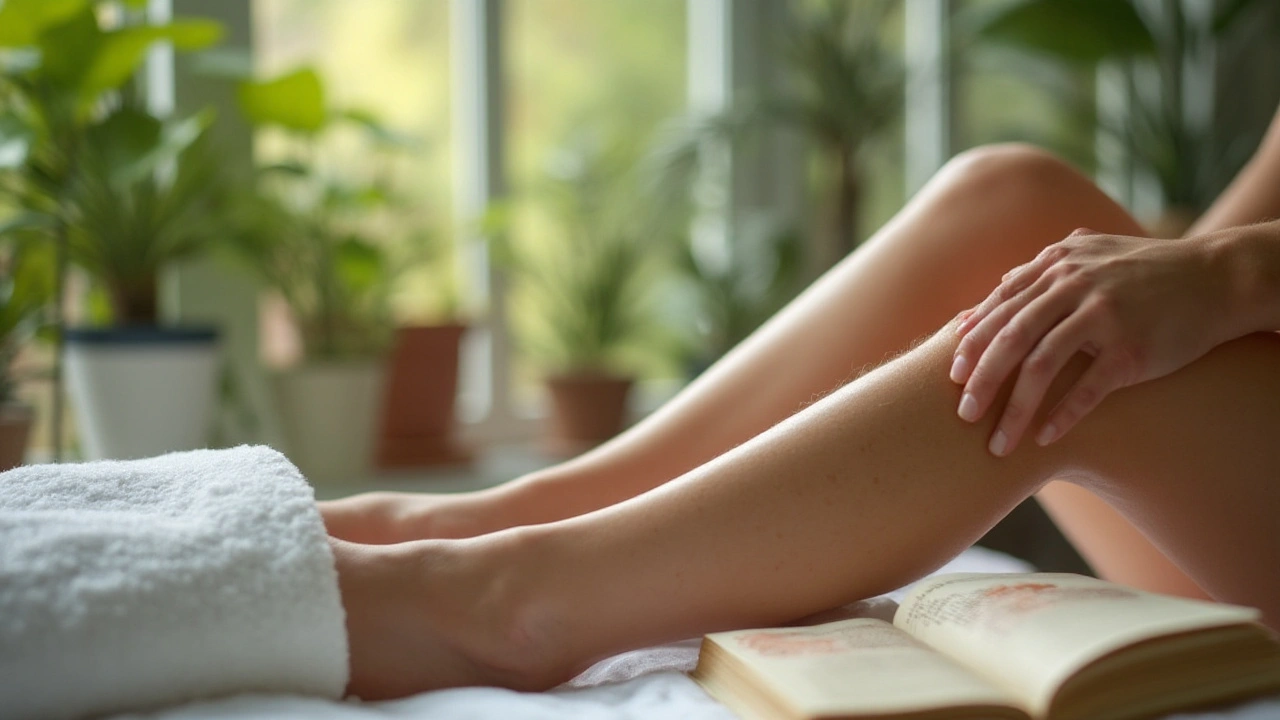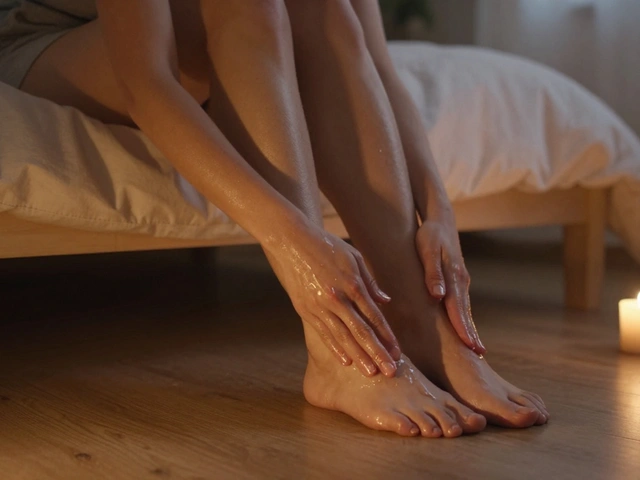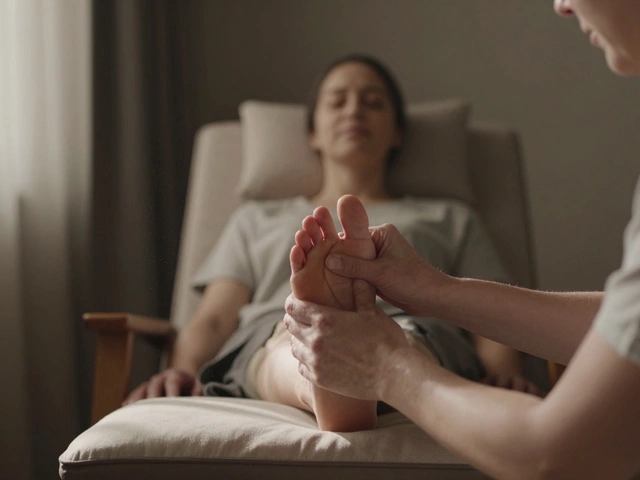Imagine a network within your body diligently working behind the scenes, maintaining your health and vitality. This unsung hero is the lymphatic system, a critical component of our immune system that often goes unnoticed. Lymphatic drainage massage aims to invigorate and optimize this system, playing a crucial role in detoxification and immunity enhancement.
In today's fast-paced world, stress and sedentary lifestyles can hinder our bodies' natural abilities. Lymphatic drainage massage, though seemingly specialized, is accessible and offers profound benefits for numerous individuals, ranging from those dealing with post-surgical swelling to anyone seeking a natural detox. Its growing popularity is a testament to the increasing awareness of holistic wellness practices, empowering individuals to take a proactive stance on health.
- Understanding the Lymphatic System
- What is Lymphatic Drainage Massage?
- Health Benefits of Lymphatic Drainage
- Who Can Benefit from Lymphatic Drainage Massage?
- Tips for Incorporating Lymphatic Drainage in Your Routine
- Professional vs. Self-Massage: Finding What Works for You
Understanding the Lymphatic System
The lymphatic system is an intricate network of tissues and organs that play a vital role in maintaining bodily fluid levels and defending against infections. This system includes lymph nodes, lymph vessels, the spleen, the thymus, and tonsils, all working in harmony to transport lymph—a clear, protein-rich fluid—throughout the body. Like a silent guardian, it traverses a vast route beneath our skin, collecting and removing waste, toxins, and other unwanted materials.
One of the less known facts about the lymphatic system is its limited capacity for circulation on its own since, unlike the circulatory system, it doesn't have a central pump like the heart. Instead, lymph movement is largely dependent on muscle contractions, breathing, and the gentle pulsations of nearby arteries. This is one reason why physical activity is crucial for lymphatic health. When you're moving, the lymph flows more efficiently, invigorating your body’s natural cleansing processes and enhancing your immune response.
Given its importance, any sluggishness or congestion in the lymphatic pathways can lead to swelling, fatigue, or a compromised immune function. Interestingly, lymph nodes are scattered like little checkpoints across these channels, filtering and trapping foreign invaders such as viruses and bacteria. These nodes swell visibly when you have an infection, as they work harder to protect you. According to a study published by the Journal of Clinical Investigation, an efficient lymphatic network is critical for healthy aging, emphasizing the necessity of keeping these pathways clear and functional.
“The lymphatic system is as crucial as blood in our circulatory processes,” says Dr. Emily Pearson, renowned immunologist, “without it, our body’s ability to detox and defend itself would drastically diminish.”
While many are aware of the circulatory system's functions, the lymphatic system often remains a mystery. But unraveling its complexities reveals a world of potential for improved health. Recognizing the signs of lymphatic distress and incorporating simple lifestyle changes can make all the difference. Diets high in antioxidants, regular exercise, and adequate hydration can drastically improve lymphatic function. Additionally, special techniques like lymphatic drainage massage can further stimulate this vital system, helping to unlock a new realm of wellness potential.
What is Lymphatic Drainage Massage?
Lymphatic drainage massage is a gentle, therapeutic technique specifically designed to stimulate the movement of lymph fluids around the body. The primary aim of this massage is to help manage lymphatic circulation, which plays a crucial role in removing toxins and waste from bodily tissues. By using light pressure and rhythmic circular movements, massage therapists can enhance the natural contractions of the lymphatic system, ensuring optimal drainage and preventing fluid retention. This technique roots in the early 20th century work of Emil and Estrid Vodder, who developed the approach to support patients with chronic colds and other immune issues.
The procedure is both science and art, requiring a skilled therapist to apply calculated gentle pressure without pressing down on muscles. Sessions often focus on specific body areas prone to lymphatic congestion, such as the neck, arms, and legs. As with any massage therapy, consistency is key to unlocking the full benefits. Studies have illustrated that regular lymphatic massages can help with post-surgical swelling, fibromyalgia, and chronic fatigue syndrome. This approach is a cornerstone of holistic health practices, highlighting its growing significance in the wellness industry.
A major advantage of lymphatic drainage massage is its adaptability. It is suitable for a wide range of individuals, from those seeking relaxation to people recovering from illness or surgery. The massage's light yet purposeful touch makes it accessible even for those who might find other massage techniques too intense. According to the Foldi Clinic in Germany, a leading institution in lymphology, proper lymphatic stimulation can combat serious issues like lymphedema, underscoring its crucial role in physical health maintenance.
"Lymphatic drainage is not just a passive treatment but a pivotal part in enhancing one's quality of life," says Dr. Christiane Demmer, a respected expert in the field.
In addition to professional therapy, some people explore self-massage techniques at home. However, engaging with a licensed professional ensures the method's accuracy and effectiveness. The intricate nature of the lymphatic system requires understanding its pathways to avoid inadvertently causing harm or inefficacy. For those particularly interested in detoxification and immune support, integrating lymphatic drainage with exercises like yoga or practices such as dry brushing can amplify results. It's not merely about physical benefits but the inviting experience of tuning into one's body, fostering mindfulness, relaxation, and an intricate understanding of one's physiological wellness.

Health Benefits of Lymphatic Drainage
Embracing the practice of lymphatic drainage is akin to giving your body a refreshing boost. This massage technique stimulates the lymphatic system, which acts as a natural waste removal network, crucial for maintaining our body's balance and defenses. When the lymphatic flow is sluggish, it can lead to a build-up of toxins and result in a variety of health issues, including sluggishness and bloating. The rhythmic strokes of a lymphatic massage encourage lymph fluid movement, thereby enhancing detoxification pathways and supporting the body's ability to metabolize waste efficiently. As a result, many individuals experience a noticeable reduction in swelling and a more toned appearance, particularly in areas prone to fluid retention. Such results aren't just about looking good but feeling a profound sense of rejuvenation.
The benefits of lymphatic drainage extend beyond aesthetics, playing a significant role in enhancing wellness. Regular sessions can strengthen the immune system by boosting the production of infection-fighting white blood cells. Lymph nodes, akin to filtration hubs, capture bacteria and viruses, assisting your body in combatting infections. People who often fall prey to colds or weak immune responses might find lymphatic drainage a valuable ally in bolstering their natural defenses. Furthermore, those recovering from surgery can benefit from this therapy as it can reduce post-operative swelling and expedite recovery times. The gentle, non-invasive nature of the procedure allows it to be integrated seamlessly into post-surgical care routines, offering comfort and healing.
Holistic health enthusiasts will find that lymphatic drainage harmonizes with a broad spectrum of wellness practices. By alleviating stress and promoting relaxation, it complements the benefits of other therapies like meditation and yoga, creating a synergy that enhances our well-being from the inside out. People often report feeling lighter and more energized after sessions, an effect owed to the increased circulation of lymph throughout the body. This sense of invigoration can lead to an improved sense of mental clarity and emotional balance, making it especially beneficial in today's fast-paced world. It's not uncommon for therapists to highlight that lymphatic massage isn't just about physical health but also about nurturing an overall state of harmony.
In the words of Dr. Andrew Weil, a renowned integrative medicine specialist, "The lymphatic system plays a crucial role in the body’s ability to heal itself."
The lymphatic system is not only a cornerstone for physical health but also for emotional healing, highlighting why therapies like lymphatic drainage are gaining popularity globally.As awareness of this practice grows, we are witnessing a paradigm shift towards preventative health measures. Incorporating lymphatic massage into one's wellness strategy is not merely a trend but a thoughtful approach to nourishing the body's intrinsic repair systems. Whether you're looking to manage lymphedema, boost immunity, or simply nurture yourself in a holistic way, lymphatic drainage offers a versatile solution with myriad benefits.
Who Can Benefit from Lymphatic Drainage Massage?
In our quest for optimal health, understanding who stands to gain the most from lymphatic drainage massage can be empowering. Fundamentally, this therapeutic technique is accessible to a broad range of people, thanks to its gentle and non-invasive nature. Perhaps one of the most common beneficiaries are individuals who have undergone surgery. During recovery, the body's lymphatic system often requires extra support to minimize swelling and promote healing, making lymphatic drainage an excellent supplementary treatment. It works by facilitating the removal of excess fluids and toxins, which can expedite the recovery process and alleviate discomfort. Surgeons and therapists frequently recommend it to accompany post-operative care, due to its minimization of fluid retention and enhancement of tissue health.
People suffering from chronic conditions such as lymphedema or fibromyalgia often find significant relief through lymphatic drainage. For those with lymphedema, the massage helps manage the painful swelling and fluid retention associated with the condition. Similarly, individuals with fibromyalgia experience widespread pain and fatigue that can be alleviated by improved lymphatic function. By enhancing circulation and reducing toxins, the massage contributes to an increase in energy levels and a reduction in pain, fostering a greater sense of well-being.
Additionally, many individuals who regularly face extreme stress or fatigue find this massage to be beneficial. Our bodies haven't evolved to cope with constant stress as effectively as they deal with occasional bouts. Stress can contribute to poor sleep, weakened immunity, and increased susceptibility to illness. Lymphatic drainage massage helps in mitigating these effects by promoting relaxation, which in turn aids in better sleep and a proactive immune response. It restores balance to the body's systems, which combats the stress-induced depletion of our natural defenses.
This massage is not just a treatment; it’s a holistic approach that aligns with today’s wellness trends. According to Dr. Peter Schmid, "Incorporating lymphatic drainage into your routine could be the missing link in your path to enduring health and vitality."
Certain lifestyle groups also see advantages from incorporating this technique into their wellness practice. Frequent travelers, who often experience jet lag and fluid retention, might find relief through lymphatic drainage, as it promotes fluid balance and revitalizes energy levels post-travel. Athletes are another group who can benefit vastly from the massage, as optimal lymphatic health translates to more efficient muscle recovery and resilience. This, in turn, supports improved performance and minimizes injury risk. Wellness enthusiasts seeking to bolster their immune systems or those looking for ways to naturally detoxify their bodies without harsh interventions often resort to this therapeutic technique as part of a regular health regimen.
Interestingly, people who prioritize skincare also turn to lymphatic drainage for its aesthetic benefits. By improving lymph flow, the massage aids in reducing facial puffiness and enhancing complexion clarity, as it helps clear toxins and reduce blood stagnation. This, alongside regular skincare routines, significantly contributes to a youthful, vibrant appearance without resorting to invasive procedures. As such, it’s a splendid, all-natural way to maintain healthy skin, while also ensuring bodily wellness.

Tips for Incorporating Lymphatic Drainage in Your Routine
Embracing lymphatic drainage as a regular practice can be transformative for your health and well-being. The key to making it a part of your routine lies in a blend of education, commitment, and listening to your body. Begin by understanding your body's signals; swelling, fatigue, and frequent colds could be hints pointing towards a need for stimulating your lymphatic system. One effective method of doing this is through massage, which can either be professionally administered or done by yourself at home with specific techniques.
When opting for self-massage, ensure you create a calming environment, free of distractions, to allow your body and mind to focus. Start with light, rhythmic strokes in the direction of the lymphatic flow. This typically means working from extremities towards the heart, such as your arms and legs, focusing on areas like the neck and shoulders where lymph nodes are abundant. Use gentle pressure as the lymph system is close to the skin's surface. During the massage, prioritize your comfort and relaxation, which helps enhance the effects of detoxification.
Besides massage, integrating holistic health practices like regular physical exercise can significantly boost lymphatic flow. Activities such as yoga, stretching, and walking encourage natural movement of the lymph. Moreover, staying hydrated is pivotal; water acts as a vehicle for lymphatic fluids, promoting smoother operation within the system. Aim to pair your hydration goals with a balanced diet rich in nutrients and antioxidants, which supports detoxification.
Consider scheduling regular sessions with a professional therapist if you're unsure about self-massage or if you experience persistent lymphatic issues. A trained therapist can tailor techniques specific to your body's needs, ensuring optimal benefits. When booking sessions, communicate any health conditions to your masseur, as this information helps tailor the approach safely and effectively.
“A lymphatic drainage massage can enhance the body’s inherent ability to filter harmful waste products and protect against infections,” says Dr. Samantha Joseph, a leading expert in lymphatic health.
Don't overlook the power of habit when integrating these practices. Setting routine times, whether weekly or biweekly, for your lymphatic care activities can foster consistency. Perhaps align these with other wellness schedules like meditative practices, ensuring a synergistic approach to wellness. To monitor progress, maintain a journal noting changes in energy levels, swelling, or general well-being post-massage, providing a personal log of benefits experienced.
Professional vs. Self-Massage: Finding What Works for You
Embarking on the journey of lymphatic drainage presents two intriguing paths: seeking the guidance of a professional or venturing into the art of self-massage. Each has its own set of unique advantages, tailoring to different needs and preferences. Professional massage therapists are skilled individuals trained in the subtleties of the lymphatic system, offering a targeted and effective experience. Their expertise ensures that each stroke and pressure is administered with precision, maximizing the benefits of the massage. Such proficiency can be invaluable for those who face more complex health issues or require intensive care.
On the other hand, self-massage embodies convenience and personalization. With just a few techniques and the right guidance, effectively nurturing your own lymphatic flow is feasible. Not only does it offer the luxury of performing it in the comfort of your own home, but it also allows for adaptability in your schedule. A simple routine before bed or after a shower can suffice, and with consistency, improvements are bound to emerge. Anecdotal evidence from wellness enthusiasts reveals a sense of empowerment from self-massage, as individuals gain a deeper connection with their own bodies.
In deciding between professional care and self-administration, it’s important to consider personal goals and circumstances. Professional sessions might be recommended for those seeking intensive results, while self-massage appeals to those looking for a cost-effective and flexible option. A combined approach may also be beneficial, utilizing professional therapy for initial treatment and maintenance through self-care practices. An insightful remark from Dr. Jane Fielding, a holistic health expert, encapsulates this balance:
"The key is to understand your body’s signals and tailor the approach to suit its unique needs. Whether through expert hands or your own, the goal remains the same – to boost your wellness through enhanced lymphatic health."
Of course, achieving success with self-massage requires the right techniques. Basic knowledge is fundamental, and numerous resources are available to assist in learning. Simple tools, like brushes or rollers, can amplify the effects, making the process both enjoyable and effective. As you explore this path, patience and attentiveness are vital. The process might start slow, but persistent efforts lead to visible results, making it a rewarding journey in personal wellness.
To summarize the options within professional and self-massage approaches, especially when addressing lymphatic drainage needs, one might find it beneficial to use both under different circumstances. Flexibility and individual needs should guide the decision-making process. The ultimate objective is to enhance the flow of lymph fluid, contributing significantly to detoxification and a robust immune system, instrumental in improving holistic health.










